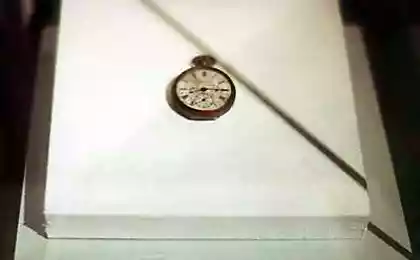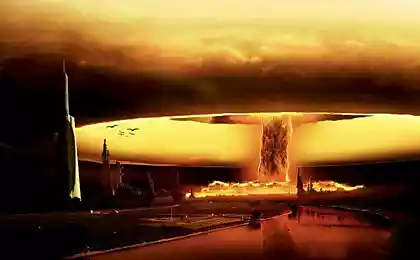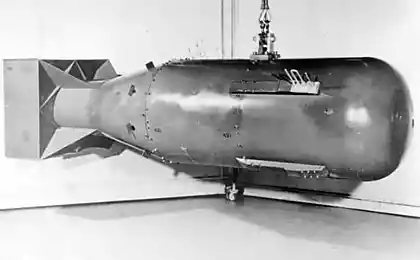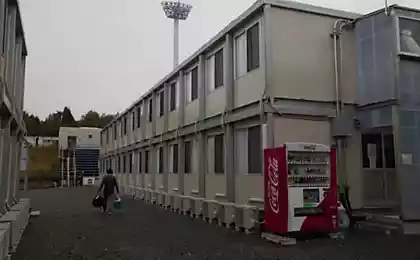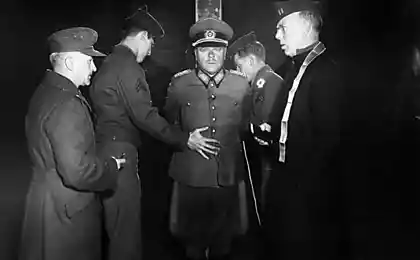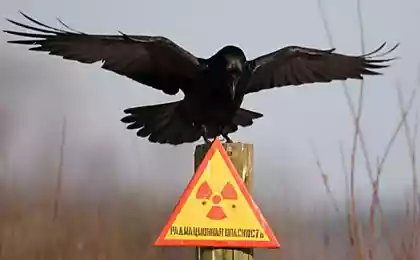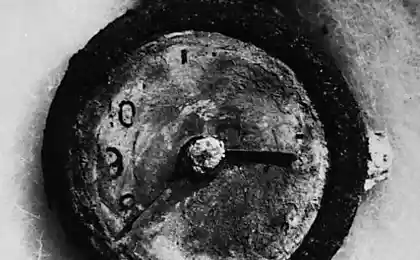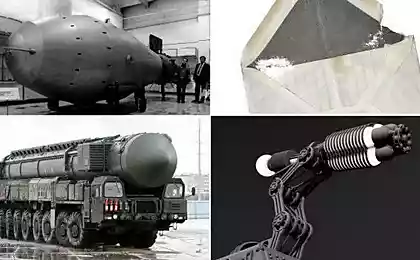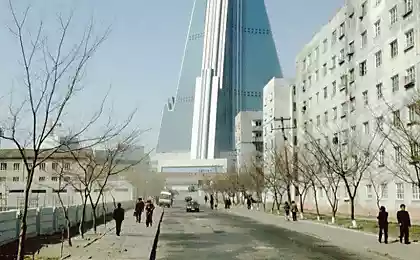788
Hiroshima - 64 years ago
Yesterday, August 6, it was noted in '64 after the atomic bombing of Hiroshima, Japan, by the United States at the end of the Second World War. What causes people guided, ordered the bombing of Hiroshima, the former home to 250 thousand people? American B-29 bomber heavy duty «Enola Gay» took off from on. Tinian, Marianas archipelago island very early morning of August 6th, carrying on board a 4,000 kg uranium bomb codenamed "Little Boy» («Little Boy», became widespread in the Soviet Union called "The Kid").
At 8:15 am, "boy" at an altitude of 9400 meters above the city, was sent to the free fall lasted 57 seconds. At the time of the explosion, the detonation of small charges of initiating powered super-critical mass of 64 kg of uranium. Of these, 64 kg, only 7 kg underwent fission, and the weight of only 600 milligrams was converted into energy - an explosive energy that has left an imprint in a radius of several miles, erasing the city's building to the ground, and forcing people to "swim" in the deadly radiation. About 70, 000 people were killed immediately, and another 120, 000 people died from injuries and radiation exposure in the period 1945-1950.
photo - 32 pcs .: US National Archives & Shizuo Kambayashi
01. Hiroshima today.
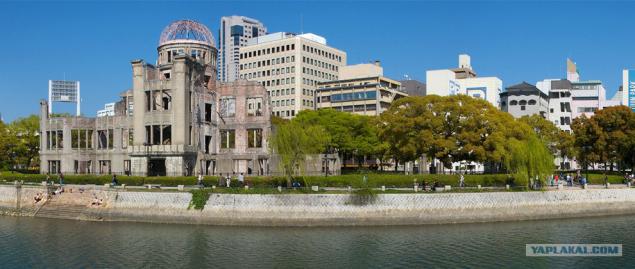
02. The Japanese soldiers are on wasteland in Hiroshima, Japan, in September 1945, a month after the explosion of the atomic bomb over the city.

03. Aerial view of Hiroshima, produced several times shortly before the events of August 1945. The picture shows a very densely built-up area of the city on the River Motoyasu.

04. One of the few photos of Hiroshima made until August 1945, survived to our times. Looking upriver Motoyasu we meet dome of the building of the Prefecture of the industry. The building is located at a distance of 800 meters from the epicenter of the explosion future.
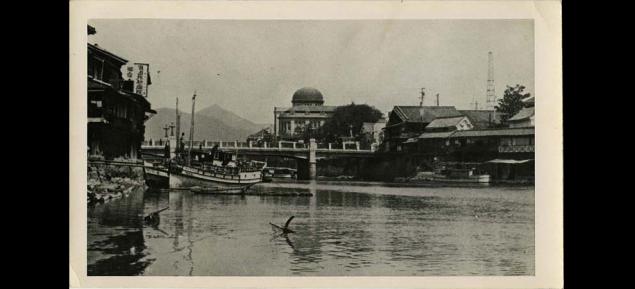
05. A fragment of the US Air Force map of Hiroshima before the bombing. Selects coordinate bombing.

06. The commander of the AF Birch (left) causes numbering to bomb codenamed "Little Boy» L-11, before being loaded on the bomber.

07. "Little Boy" himself. 3 meters long, 4 tons of weight.

08. A few minutes after the explosion. The photo was taken from aboard the bomber. At this point, the deadly beams of radiation have already kill more than 45, 000 lives.
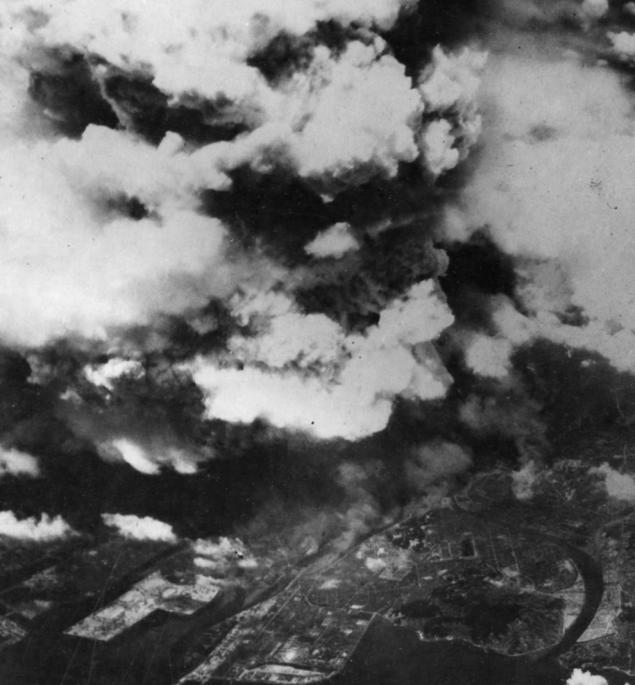
09. The growing fungus. Photos from the bomber. The temperature of the fungus reaches 3980 'C. The height of the fungus - 6 km.
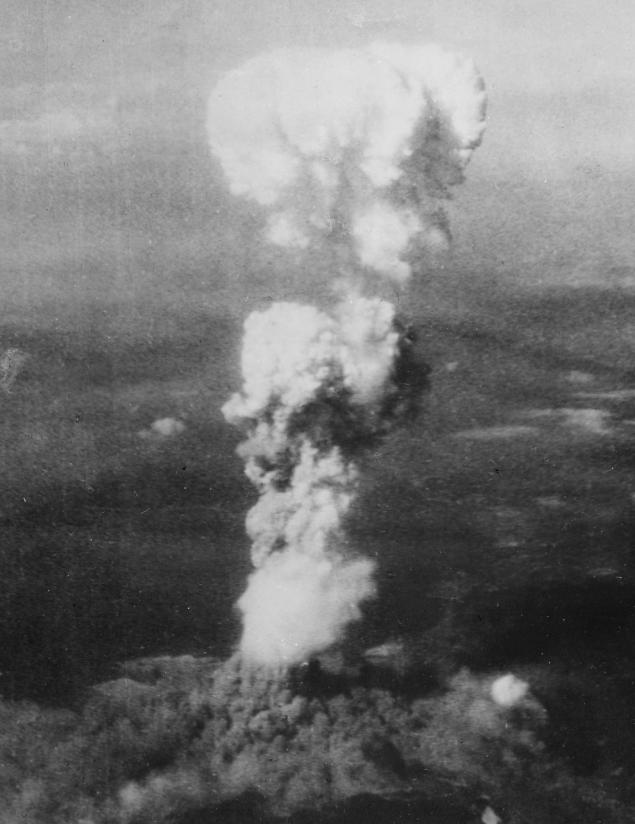
10. Type of destruction in Hiroshima. Autumn 1945
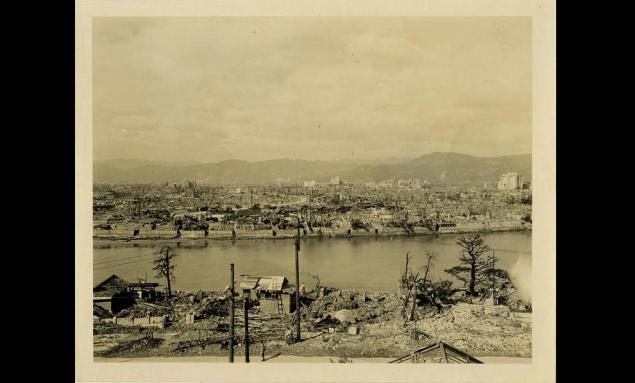
11. Autumn 1945 hypocenter of the explosion (the bomb detonated at an altitude of 450-500 meters above the ground. Hypocenter - the point directly beneath the bomb).
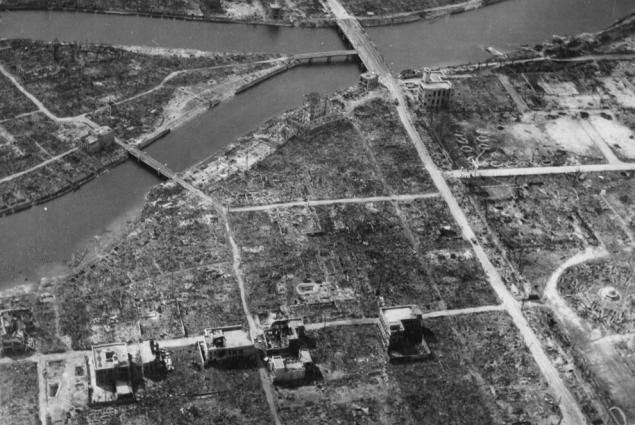
12. The Bridge on the River Ota. 880 meters from the hypocenter. Note shielded "shadow" on the pavement - surface areas are somewhat less scorched under the influence of light radiation.
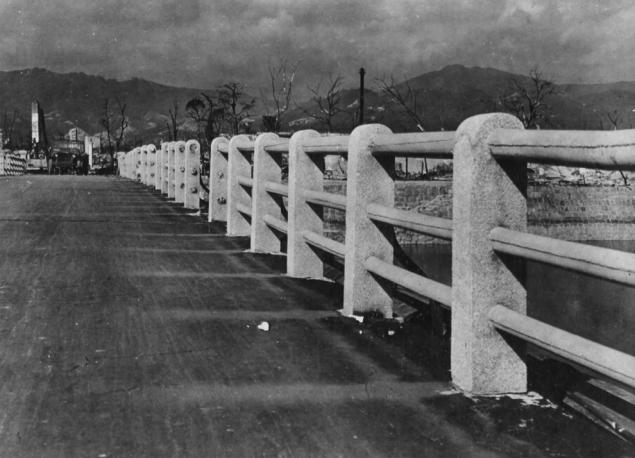
13 color photos. 1946
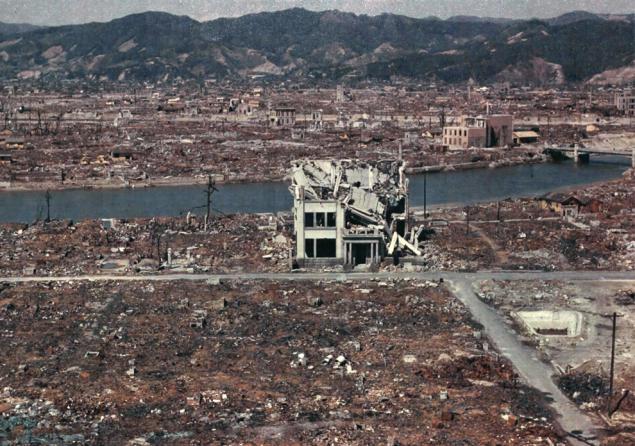
14. Photos of destruction, November 7, 1945.

15. One of the streets of the city. Pay attention to the "torn up by the roots" pavement.
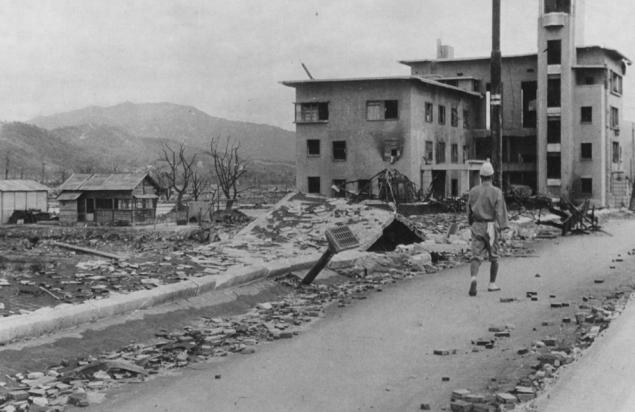
16. October 2, 1945. Burns on the face of a Japanese soldier who was at the time of the explosion at a distance of 2, 3 km to the shelter.
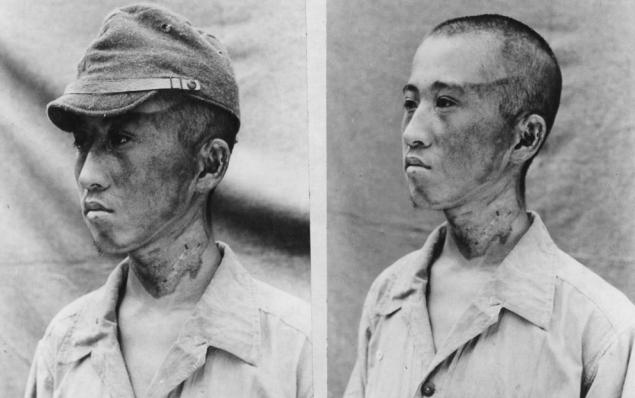
17. The iron beams, knotted - all that remains of the theater building, is 800 meters from the hypocenter of the explosion.
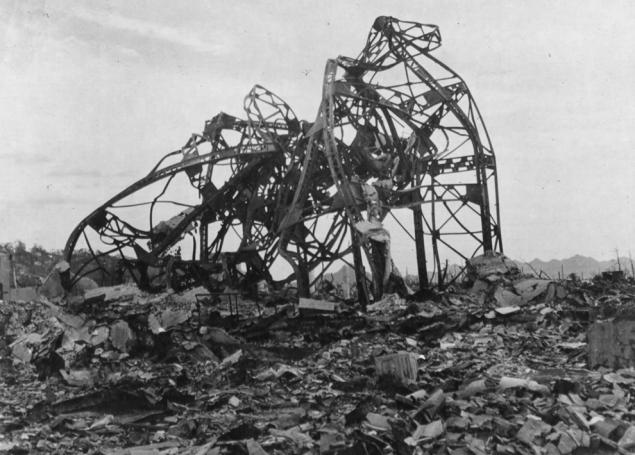
18. 1,200 meters from the hypocenter.
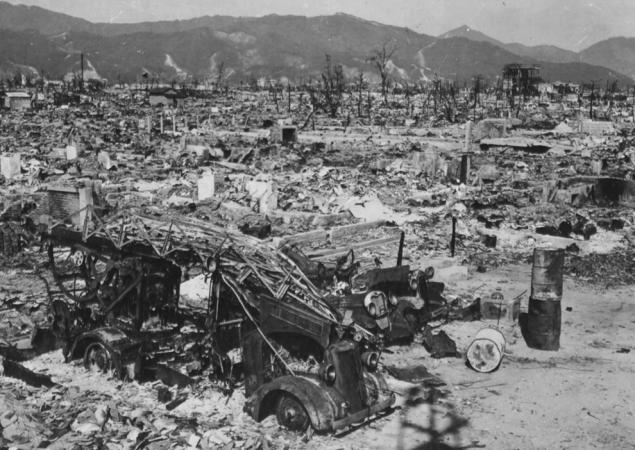
19. Autumn 1945
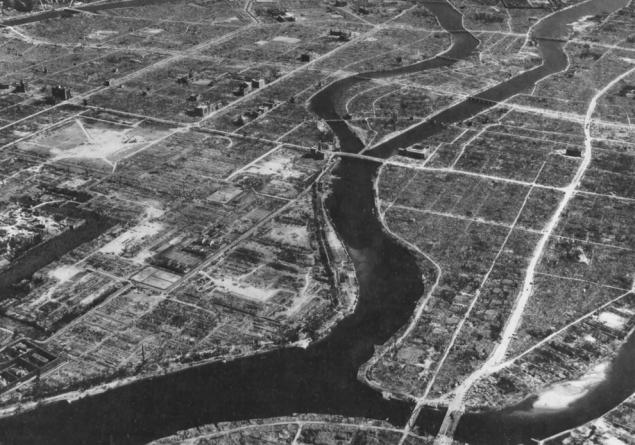
20. The ruins of the city's outskirts. 1945
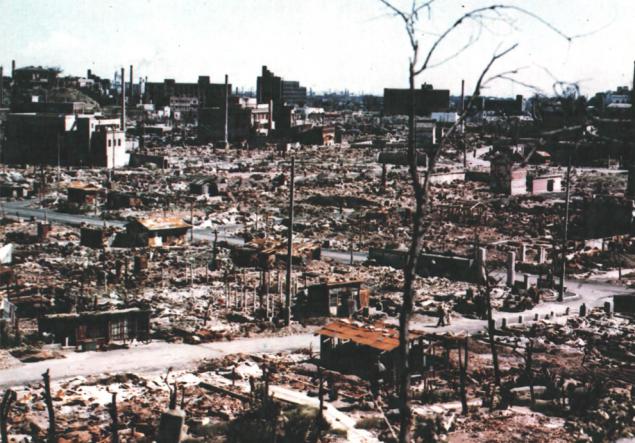
21. Another "shadow." 1920 meters from the hypocenter.
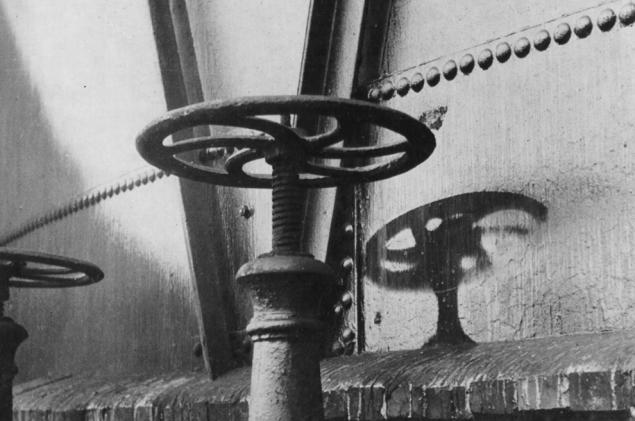
22. The victims of the explosion. September 1945
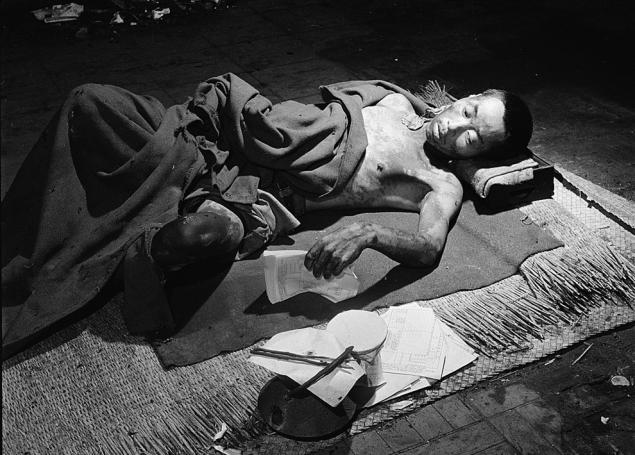
23. Another victim. The skin burned as a stencil - printed in black of a kimono, White got a smaller loss.
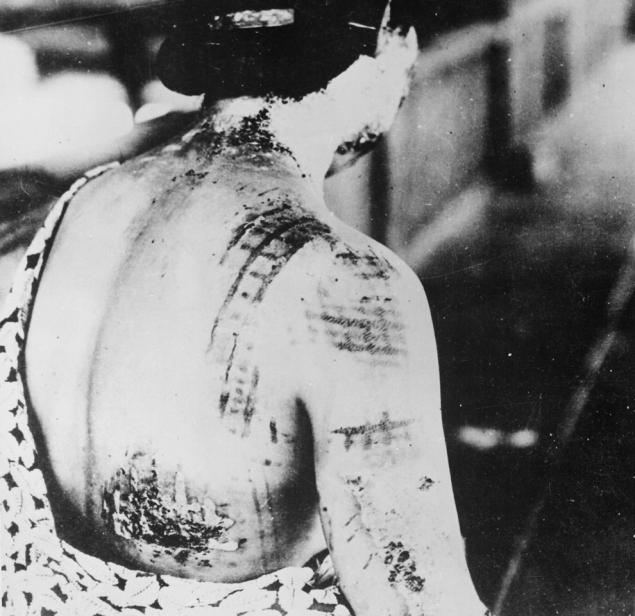
24. September 15, 1945. Hospital organized in a dilapidated building of the bank.
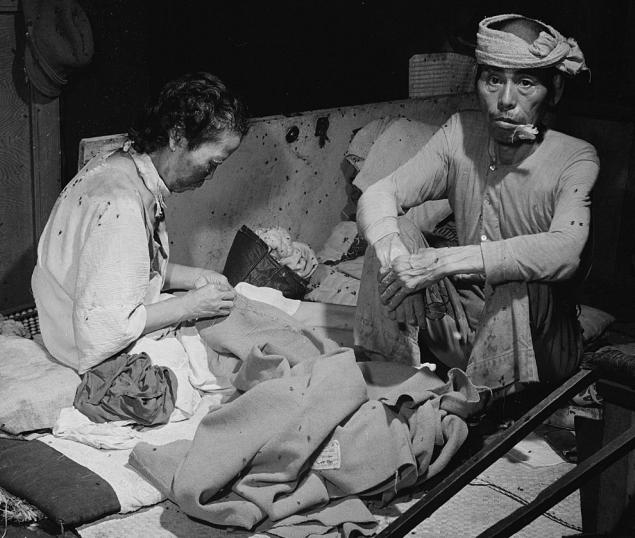
25. Kiloidnye scars on his back and shoulders of the victim of the explosion.
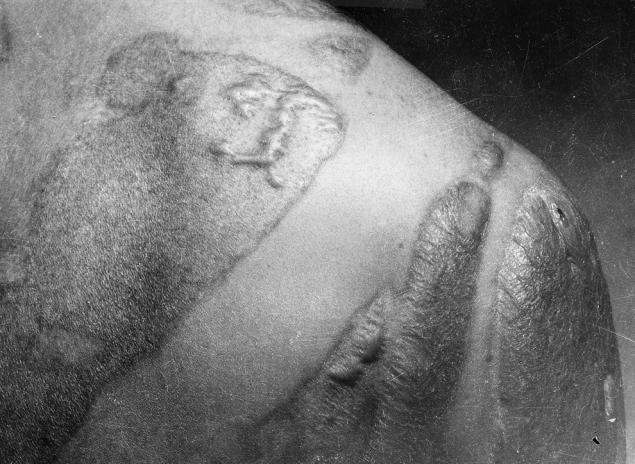
26. Aerial view. October 24, 1945.
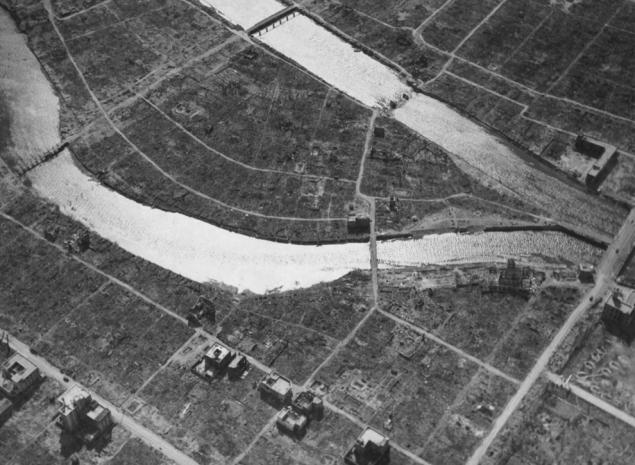
Source:
At 8:15 am, "boy" at an altitude of 9400 meters above the city, was sent to the free fall lasted 57 seconds. At the time of the explosion, the detonation of small charges of initiating powered super-critical mass of 64 kg of uranium. Of these, 64 kg, only 7 kg underwent fission, and the weight of only 600 milligrams was converted into energy - an explosive energy that has left an imprint in a radius of several miles, erasing the city's building to the ground, and forcing people to "swim" in the deadly radiation. About 70, 000 people were killed immediately, and another 120, 000 people died from injuries and radiation exposure in the period 1945-1950.
photo - 32 pcs .: US National Archives & Shizuo Kambayashi
01. Hiroshima today.

02. The Japanese soldiers are on wasteland in Hiroshima, Japan, in September 1945, a month after the explosion of the atomic bomb over the city.

03. Aerial view of Hiroshima, produced several times shortly before the events of August 1945. The picture shows a very densely built-up area of the city on the River Motoyasu.

04. One of the few photos of Hiroshima made until August 1945, survived to our times. Looking upriver Motoyasu we meet dome of the building of the Prefecture of the industry. The building is located at a distance of 800 meters from the epicenter of the explosion future.

05. A fragment of the US Air Force map of Hiroshima before the bombing. Selects coordinate bombing.

06. The commander of the AF Birch (left) causes numbering to bomb codenamed "Little Boy» L-11, before being loaded on the bomber.

07. "Little Boy" himself. 3 meters long, 4 tons of weight.

08. A few minutes after the explosion. The photo was taken from aboard the bomber. At this point, the deadly beams of radiation have already kill more than 45, 000 lives.

09. The growing fungus. Photos from the bomber. The temperature of the fungus reaches 3980 'C. The height of the fungus - 6 km.

10. Type of destruction in Hiroshima. Autumn 1945

11. Autumn 1945 hypocenter of the explosion (the bomb detonated at an altitude of 450-500 meters above the ground. Hypocenter - the point directly beneath the bomb).

12. The Bridge on the River Ota. 880 meters from the hypocenter. Note shielded "shadow" on the pavement - surface areas are somewhat less scorched under the influence of light radiation.

13 color photos. 1946

14. Photos of destruction, November 7, 1945.

15. One of the streets of the city. Pay attention to the "torn up by the roots" pavement.

16. October 2, 1945. Burns on the face of a Japanese soldier who was at the time of the explosion at a distance of 2, 3 km to the shelter.

17. The iron beams, knotted - all that remains of the theater building, is 800 meters from the hypocenter of the explosion.

18. 1,200 meters from the hypocenter.

19. Autumn 1945

20. The ruins of the city's outskirts. 1945

21. Another "shadow." 1920 meters from the hypocenter.

22. The victims of the explosion. September 1945

23. Another victim. The skin burned as a stencil - printed in black of a kimono, White got a smaller loss.

24. September 15, 1945. Hospital organized in a dilapidated building of the bank.

25. Kiloidnye scars on his back and shoulders of the victim of the explosion.

26. Aerial view. October 24, 1945.

Source:

